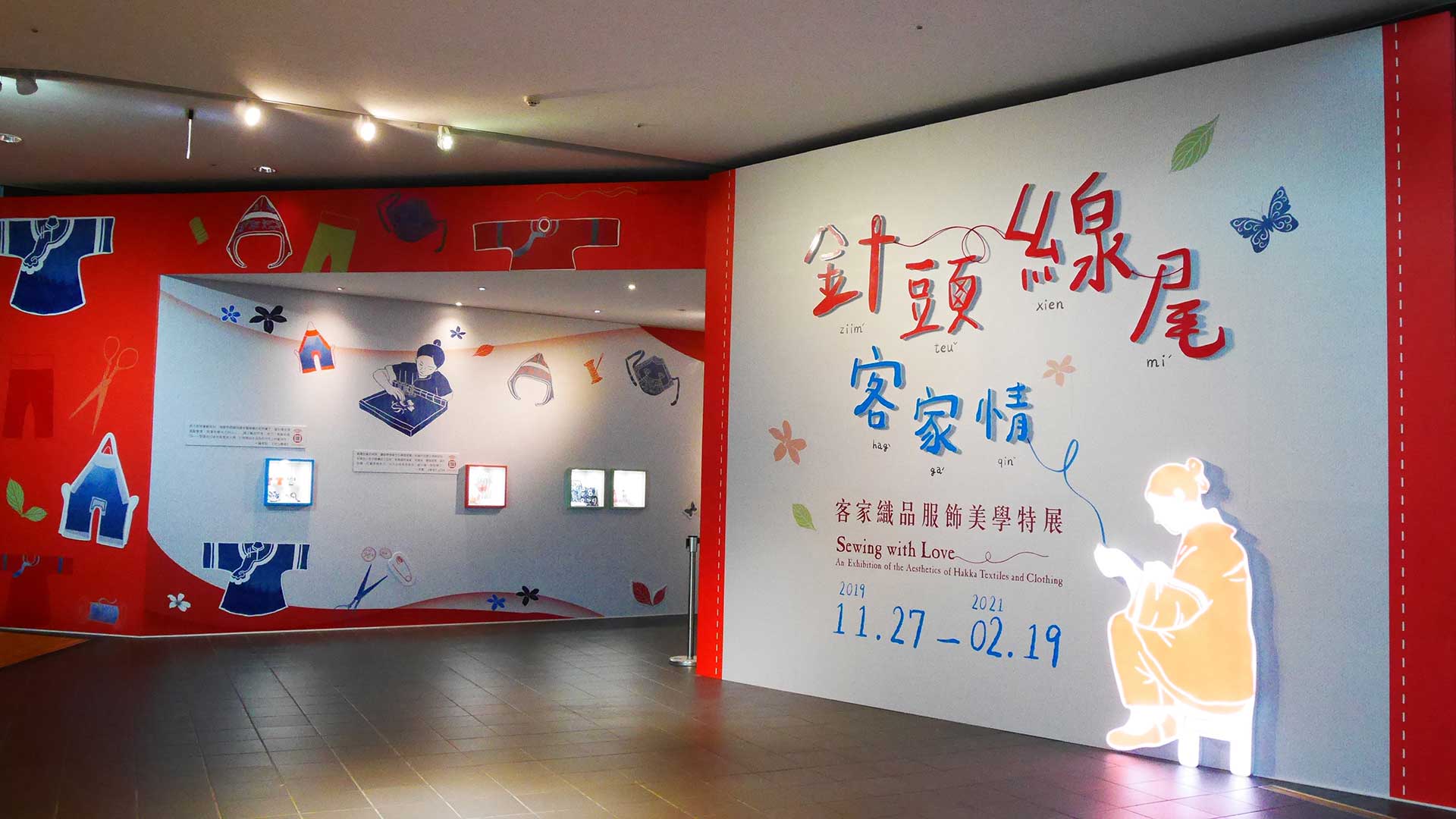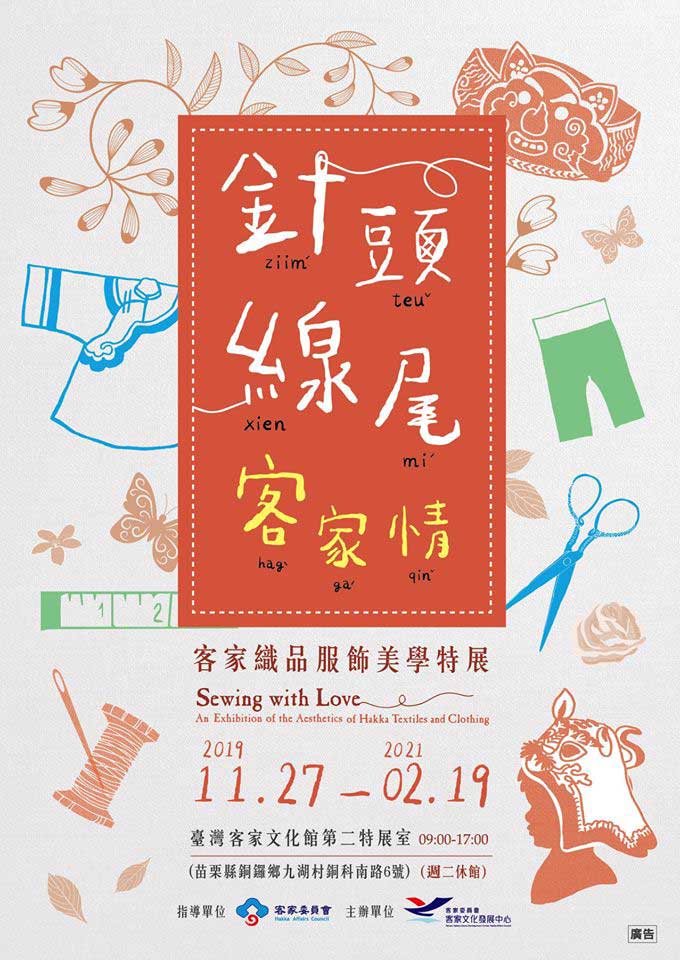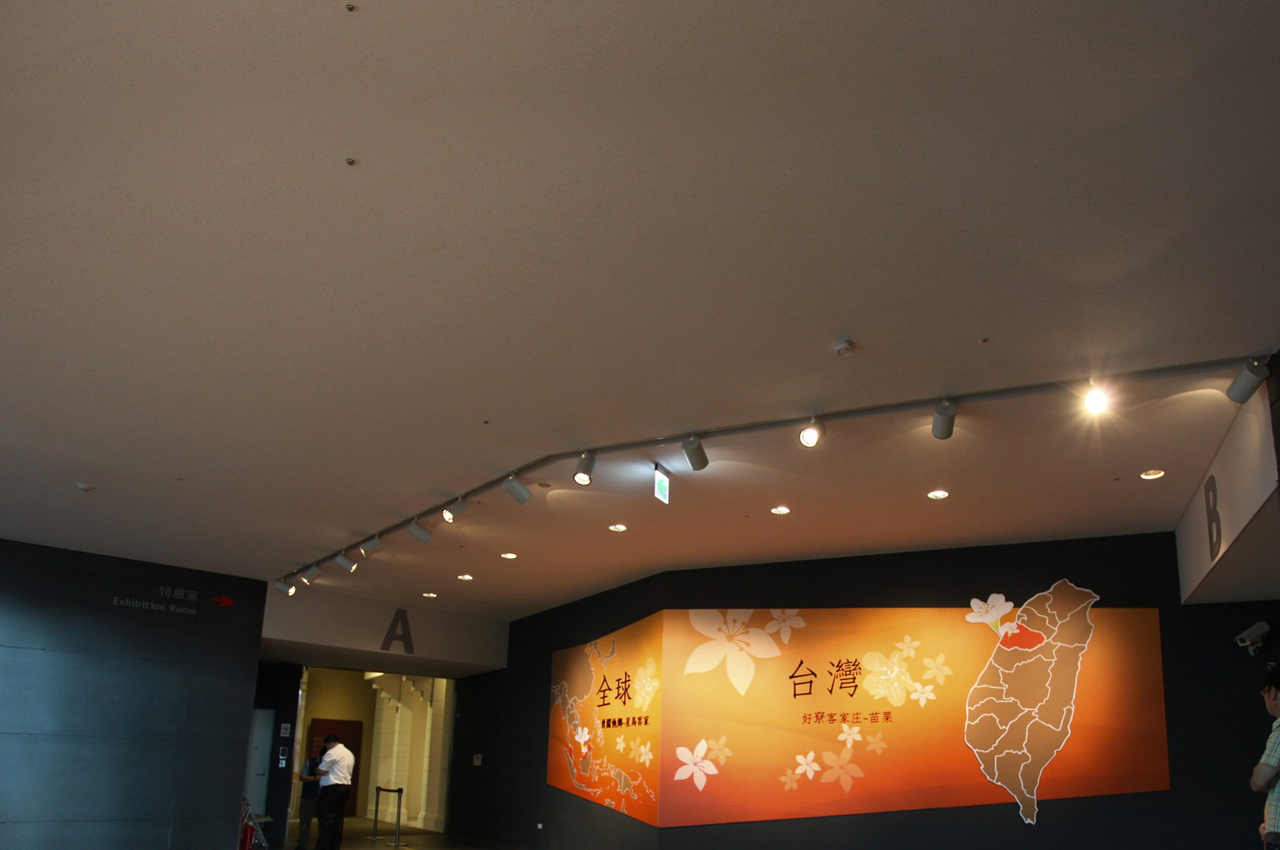Exhibition Review
2nd Special Exhibition Hall – Special “Needle and Thread” exhibition: Hakka textiles and clothing aesthetics

Exhibition: from November 27th, 2019 to February 19th, 2021
Venue: Taiwan Hakka Museum, Exhibition Gallery 2

Philosophy curatorial:
Following the ethnicity and experience of life, Hakka textile and clothing change over time and develop ultimately into aesthetics characterized by inclusiveness as they integrate elements of fashion and style with practicality, durability, and modesty. Traditional Hakka women attach great importance to embroidery and needlework and are expected to learn “the four major skills” to find a good husband. “Needlework and stitching” is considered the primary skill that every Hakka woman must be taught during their childhood. This exhibition is intended to invite everyone to explore and discover the reserved, self-composed, yet rich embroideries and accessories of Hakka women, as well as the charisma and splendor of Hakka handicrafts that reflect this culture beyond the stereotypical blue Hakka shirts.

Native blue shirts (ngienˇ hiongˊ lamˇ samˊ)
Hakka women’s clothing is closely related to their daily lives and heritage. Both vegetable-dyed blue fabrics, known as “the blue shirts”, and large, loose “black crotch pants” are representative of traditional everyday clothing. The clothes worn by Hakka women reflect the notion of simplicity and frugality: the main features include sweat absorption, stain resistance, and are convenient for carrying out work and activities. Influenced by factors such as geographical environment and ethnic and cultural integration, the quality of the materials, tailoring structure, and adornments of blue Hakka shirts in northern and southern Taiwan are slightly different. But regardless of these difference, the Hakka people’s lifestyle of pragmatism and simplicity is fully revealed.

Pull strings (conˊ ziimˊ inˋ xien)
In the early agricultural society of Taiwan, Hakka women mostly wore blue shirts and black pants, which were convenient for doing farming and household chores, yet the garments they wore under their rustic blue shirts still featured exquisite and resplendent workmanship and craft from delicate and beautiful embroideries handed down from ancient times. The art of embroidery is mainly manifested in women’s underwear, and dowries, wedding, customs, and ritual tools and supplies. Married women also sewed to make sophisticated garments and beanies for their children after the wedding. The weave and interlace of the threading and needlework signify anticipation for their future happiness for both graceful and charming girls of noble or humble birth.

Threads of connection (qienˊ siiˊ van liˊ)
Relationships and family are always valued and respected by Chinese society, and by the Hakka people in particular. Hakka women play an important role in maintaining the entire family. They are required to wake up early in the morning to do all the household chores: to look after and serve their mother and father-in-law while taking care of and teaching their children. Everything should be well arranged. The responsibility of giving birth, raising children, and showing concern for future generations is even more evident. Great expectations are incorporated into the countless threads of weaving and embroidering patterns.

Creative art of traditional Hakka culture (congˋ ngi conˇ hagˋ)
Presenting the elegant demeanor of contemporary Hakka clothing stunningly integrated into vogue aesthetics reflects the vitality that is passed down from generation to generation. The style of clothing is rooted in culture, and when the “natural and plain” style of traditional Hakka clothes gradually transforms into a trendy brand and modern art, it is essential that the inner spiritual culture be extracted from the tradition. Through deconstruction and revitalization, multiple meanings of the national character, aesthetic ideology, and humanism of the ethnic group should be injected into the modern twist of this old tradition, and allow the younger generation to recognize and become acquainted with the colorful and diversified world of Hakka aesthetics.



